The adhesive supplier boasts of being “a global leader that treats people like family.”
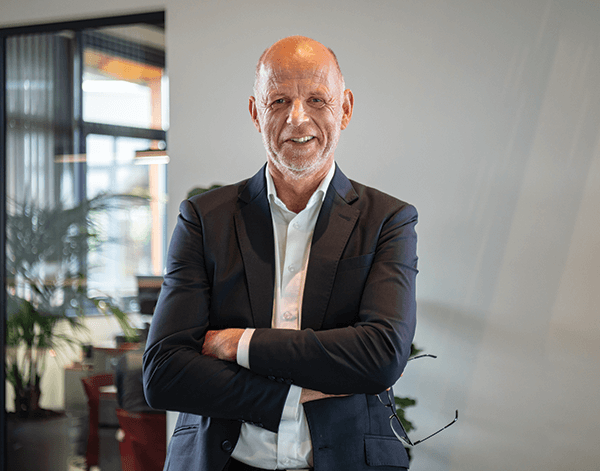
Forging strong bonds — that’s the crux of global adhesive supplier SABA’s longtime mission. And that mission applies equally to its products and its relationships.
“It’s not a cliché when we talk about our strong bonds with people,” says Wybren de Zwart, CEO of SABA Dinxperlo B.V., based in Dinxperlo, Netherlands. “We have strong bonds amongst employees, customers, suppliers, stakeholders, etc., and that’s what makes us different. We’re a global leader that treats people like family.”
Another core part of its mission is sustainability. SABA takes a multipronged approach to reducing its environmental footprint that includes developing ecologically responsible production processes, improving energy efficiency, and minimizing the carbon impact of transportation and logistics. The company is also focused on how its adhesives are used throughout their entire life cycle, from the time a mattress is produced until the point when it is ready for recycling or upcycling its components.
“Sustainability is at the very core of our identity at SABA and a quest we’ve been on for many years,” de Zwart says. “Making meaningful investments in technologies to reduce emissions, conserve resources and enhance efficiency is nothing new for us.”
“The fun thing for me, though, has been to watch things really come to life in our new facility,” he continues. “Our new facility is natural gas-free, contains more than 1,800 solar panels, and we installed a sedum-covered roof for insulation and water retention. We even raise honeybees on-site and harvest fresh honey, which is a personal passion of mine.”
Sedum are succulent, drought-tolerant plants that require little maintenance, De Zwart adds. These natural properties make sedum extremely suitable for roof greening, where they help retain heat and capture water.
A bio breakthrough
As part of its sustainability efforts, earlier this year SABA introduced Sababond 3415, a rollable, water-based adhesive with more than 75% bio-based (natural latex) content intended for use in layered and roll-packed mattresses. Described by SABA as the world’s first rollable, bio-based adhesive for mattress production, Sababond 3415 has earned the independently certified “DIN-Geprüft 50%-85%” bio-based certification mark.
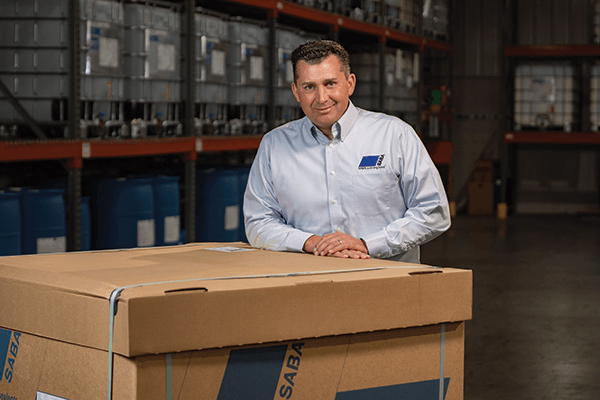
To earn that label, SABA Dinxperlo had to demonstrate the proportion of bio-based carbon that Sababond 3415 contains. Sababond was certified for having a level of 50-85% bio-based material. TUV Rheinland, the Cologne, Germany-based testing service that runs this program, also offers two other certifications — for products with bio-based material levels of 20-50% and those with more than 85% bio-based materials.
In addition to its “DIN-Geprüft bio-based” certification, which is valid for six years, Sababond 3415 is Greenguard Gold-certified by UL Solutions for its low total VOC emissions.
With “zero dry time, robust bond strength and excellent recovery,” Sababond 3415 provides an especially attractive option for producers of mattresses with edge-to-edge pocket coils,” says Jim Turner, CEO of SABA North America LLC in Kimball, Michigan. “Pocket coil mattresses can be difficult to bond with traditional water-based adhesives, but Sababond 3415 delivers excellent bond strength to most any bedding substrate.”
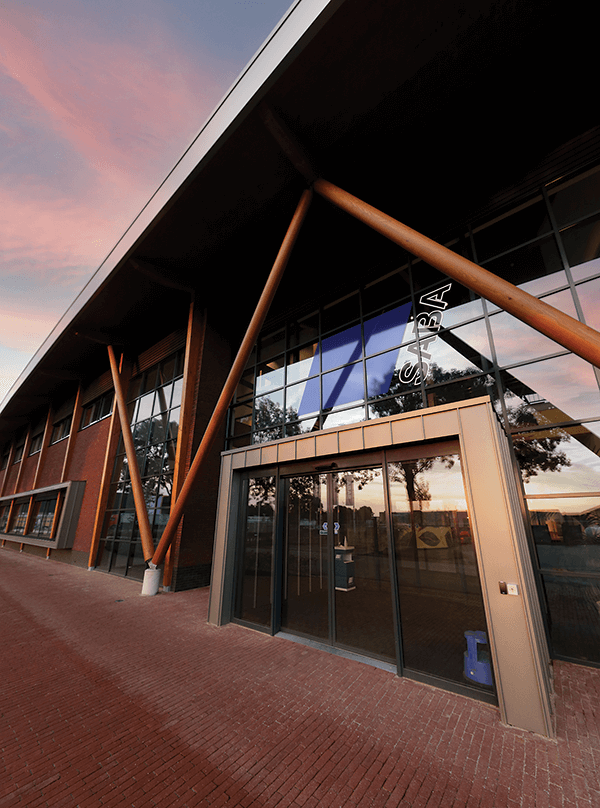
Turner adds that Sababond 3415 is competitively priced and fits easily within existing production lines for manufacturers that already use water-based, rollable adhesives. It’s also suitable for immediate roll packing of beds, with or without thermal activation.
“Sababond 3415 delivers unmatched performance and value,” de Zwart says. “To make a real difference, sustainable product developments must be application viable, and this one is an absolute home run.”
Turner adds: “We expect it won’t be long before customers get more comfortable with the idea of a bio-based adhesive and Sababond 3415 becomes one of our bestselling adhesives in the boxed bed segment.”
According to Turner, roll coating allows producers to use the optimal amount of adhesive for the job, reducing the cost of materials and waste as well as the environmental impact. “By eliminating the over-application of adhesive, which is common in manual processes, mattresses assembled using a rollable adhesive could be easier to dismantle during recycling.”
Hot melts join the mix
Long known for its premium adhesives, SABA has broadened its offerings during the past few years to include a more comprehensive lineup of good-better-best products. Recently, the company introduced Sababond 3306 and 3387, two water-based adhesives designed to provide quality bonds at a more economical price, Turner says. The adhesives allow mattress producers to select a product that fits their budgets without sacrificing quality.
“Our research with alternative raw materials has created new opportunities for offering a good-better-best menu of adhesive options,” Turner says. “This approach allows each customer to decide which product is the best fit for their unique production needs.”
As part of this initiative, SABA North America entered the hot-melt market for the first time in 2022. SABA has produced some hot-melt adhesives for customers in Europe for decades, “but with our core technology being water-based adhesives, that has been our sole focus in North America up until this addition,” Turner says.
SABA North America’s assortment includes Sabamelt 4750, a hot-melt adhesive suitable for all mattress types, including foam-encased models. Designed for manual application, the adhesive offers high initial tack, quiet bond lines and fast strength buildup.
In addition, SABA North America offers Sabamelt 4910, a hot-melt adhesive intended for automatic mattress production machines, and Sabamelt 4732, a granulate hot-melt adhesive suitable for pocket spring production.
“To truly be a global leader in solvent-free foam bonding, we needed to offer our customers the option of hot melt,” Turner says. “There are certain applications and constructions that are best served with hot melt and others where water-based adhesives are the way to go. Now, we offer a strong range of both.”
According to Turner, the chemical composition and properties of SABA’s water-based adhesives provide the best option in terms of bond strength over the long term, with the added benefit that they are environmentally friendly.
“A water-based adhesive provides the ultimate final bond,” he says. “This, combined with flexibility and soft bond lines, makes water-based technology a first-class solution for foam bonding.”
Hot-melt adhesives have strengths, too. They provide a strong bond, can be easily integrated into automated production processes and cure rapidly without the need for water evaporation, Turner says.
“If our customer’s production process does not allow for the processing time of a water-based adhesive or if their substrates are not fully compatible with a water-based adhesive, then hot melt is a very viable alternative,” he says.
R&D drives growth
To keep pace with an ever-changing market, SABA Dinxperlo spends more than 10% of its annual budget on research and development. The company continually looks for new ways to meet its customers’ adhesive needs — both current and emerging. In a typical year, it introduces 10 new products to the various industries it serves, which include bedding, construction, furniture and transportation.
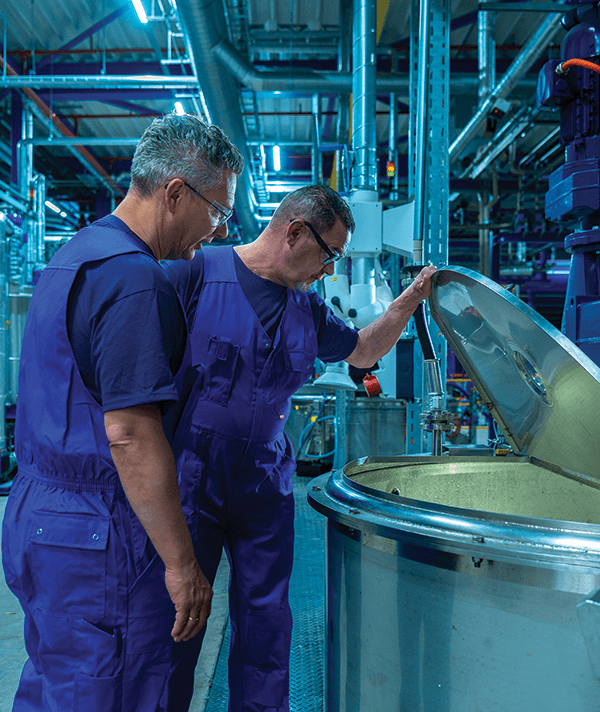
In the sleep products market, one major area of innovation has involved boxed bed construction. SABA’s Produce and Pack line, introduced in 2014, allows boxed bed producers to save time and money by offering them a rollable, water-based adhesive process that requires no drying time through the integration of a forced drying step. In this approach, infrared heat is applied to the bed surface, causing the immediate evaporation of water in the adhesive.
“When the boxed bed market took off, our chemists focused hard on ways to speed up the drying process,” Turner says.
At the same time, product developers focused on recovery and durability, making sure that beds using the adhesives will perform as expected long after they are removed from their boxes. “Producers want to get the beds through their plants fast, but they also need them to recover quickly and properly when they reach consumers’ homes,” Turner says.
A shining example
SABA’s new campus of offices demonstrates its commitment to sustainability. Opened in 2022 at its longtime headquarters in Dinxperlo, the campus includes an R&D lab and production space. But its most notable features are sustainable. Designed by Te Kiefte Architecten of Borne, Netherlands, the new SABA buildings are energy neutral, according to the company. Solar panels provide energy for the offices and, in part, the plant. Surplus heat from the production process is stored in the treated water tank of the sprinkler system. That heat, in turn, is used to heat the offices in winter.
SABA is working on a cradle-to-gate analysis that will give it insights into its CO2 emissions — from the extraction of raw materials (cradle) to packaged products ready for shipment (gate). This life cycle assessment evaluates the CO2 emissions of raw materials, production, energy consumption, waste and transportation.
“As soon as this analysis is complete, we will be able to use the baseline measurement to set realistic and ambitious goals,” says a statement about the program on the SABA website. “We can subsequently measure whether our measures actually are having an impact.”
In the new factory at its headquarters site, SABA has the capacity to triple its previous production volume, in part because it has increased automation.
Personal touch
In the United States, SABA North America’s primary business is foam bonding for sleep products, Turner says. “We also supply the furniture industry and some automotive seating, but sleep is where we devote most of our attention.”

To serve its customers, SABA North America has a skilled staff of in-house operations and customer service professionals, along with field-based account executives and technicians. The team provides ongoing training and support to address questions about the application of SABA products.
“We don’t just sell adhesives — we provide a complete, full-service bonding solution,” Turner says. “If you buy adhesives from us, you know we’re going to work with you to solve any issues that come up.”
Taking that hands-on approach gives SABA useful insights into its customers’ emerging needs. “Mattress constructions and substrates are constantly evolving, so we’re always on the lookout for new solutions and what might be the next breakthrough technology,” Turner says. “Adhesives sometimes are an overlooked or underappreciated part of the mattress, but they are a vital part of the construction and performance of any bed.”
To support its North American customers, SABA operates warehouses in California, Michigan and Texas, as well as one in Ontario. “We maintain a stock of finished goods in each so that we can offer customers lower freight rates on their orders,” he says. That inventory includes an assortment of SABA’s proprietary spray guns, used for manual application of water-based adhesives.
SABA does not sell other, larger machinery, such as rollcoating equipment, but it maintains close relationships with all the major suppliers to help customers with any questions that arise.
The company currently serves customers in Mexico from its warehouse in Texas. It also has a sales representative based in Mexico City. The company is planning to expand its presence in the region by adding another sales representative in early 2024.
“We offer our full portfolio of water-based and hot-melt adhesives to the region and have seen strong and consistent growth over the past years,” Turner says. “Over the past year, our hot melt for automatic application, SM 4910, has grown to substantial volumes in the region thanks to its high performance and competitive position.”
What’s ahead
Heading into the first half of 2024, SABA expects demand for mattresses will continue to be soft but more consistent. “Things have stabilized,” Turner says. “For a while, there was a glut of inventory in the market, both finished goods and raw materials. We had major manufacturers who stocked up on adhesive when business was good that then went months and months without needing to reorder because sales cooled off. Those excess inventories have now been used up, so business has become steadier again.”

In the coming year, SABA aims to leverage its strengths in innovative products and service to grow its market share, and the R&D team is developing several new formulations of bio-based and hot-melt adhesives for use in sleep products.
The company is also rolling out a new marketing campaign designed to build awareness of SABA’s recently diversified product mix. The campaign will include email marketing blasts, LinkedIn postings and trade advertising.
“We want to get the word out to customers that we now have a complete menu of products, including a lower-priced range that we didn’t used to have,” Turner says. “We can help customers identify which adhesive is best for their particular application, then work closely with their production teams to make sure they have the knowledge they need to do the job right.”
In the coming year, Turner and his team also will be working to get the word out about SABA’s commitment to increased sustainability. In September, he attended the ISPA Sustainability Conference, which he describes as “a fantastic event allowing for networking and the sharing of ideas across the value chain.
“Building these connections is critical because we want to engage with our customers in the mattress design phase to support them in achieving sustainability goals without sacrificing product comfort or quality. This can be in the form of circularity by design by matching the adhesive formulation to the mattress design or options to support disassembly at the point of recycling.”
SABA’s Origin Story in the Netherlands and US
SABA has been developing and producing high-quality, innovative adhesives in Dinxperlo, Netherlands, for 90 years. The company was founded in 1933 by Rudolf Salm, Otto Baruch and Walter Bongartz as a small, regional producer of polishes and adhesives for shoe manufacturers. SABA’s company name was created by combining the first two letters of Salm and Baruch’s last names. In 1935, Karel Otten joined the company.
In 1948, the company hired its first chemist dedicated to pioneering new products, marking the beginning of a dynamic era of innovation. By the 1950s, the company had crafted its first adhesives for the furniture and mattress industries. In the 1990s, the company says, it launched the first water-based adhesives for foam processing.
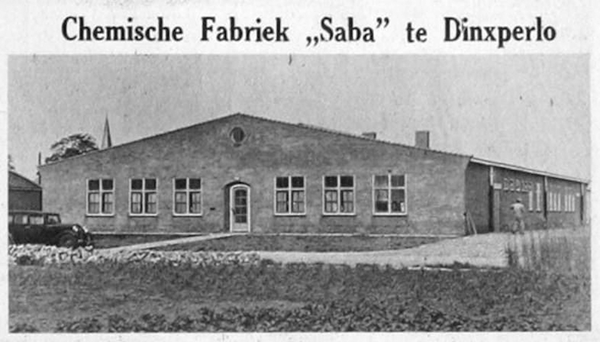
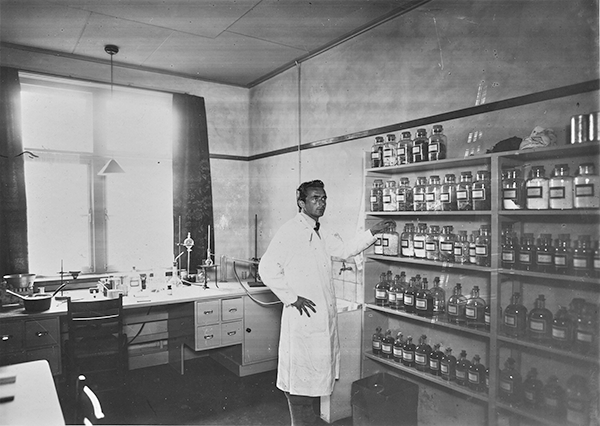
Today, SABA has production facilities in the Netherlands, as well as sales and distribution facilities in Australia, China, Germany, Poland, Romania and the United States. The company continues to be privately held by the Baruch and Otten families. Two family members serve on its board: Robert Baruch, grandson of company co-founder Otto Baruch, and Wilfred Otten, grandson of Karel Otten.
“Over nearly a century, SABA has grown into a leading multinational, but our DNA is still the same,” says CEO Wybren de Zwart. “We are still a family business.”
A “growth engine”
SABA North America LLC in Kimball, Michigan, traces its roots to 2007, when Jim Turner saw an opportunity to combine his knowledge of industrial finishing and machinery with SABA’s growing line of adhesives. Then serving as vice president of business development at Dux Technologies, a spray gun equipment maker based in Seattle, Turner helped establish a partnership between SABA and Dux to launch the SABA water-based adhesive product portfolio in the United States. Within a year, SABA had acquired the new business, with Turner at the helm as CEO.
North America has become one of SABA’s largest markets worldwide. Driven by the sleep products industry (which accounts for about 75% of both SABA and SABA North America’s total business), SABA North America has steadily expanded to serve a diverse mix of bedding producers, large and small.
“SABA North America has been our growth engine over the past decade,” de Zwart says.
While North America stands as a cornerstone, SABA also has a strong position in sleep products markets globally, especially in Europe.
“Europe is a strong and robust market for us, and as the emphasis on sustainability and health and wellness continues to grow, we are well positioned for continued growth,” de Zwart says. He adds that Asia and South America represent emerging markets “where we have strong teams in place and foresee considerable growth opportunities for the years to come.”




